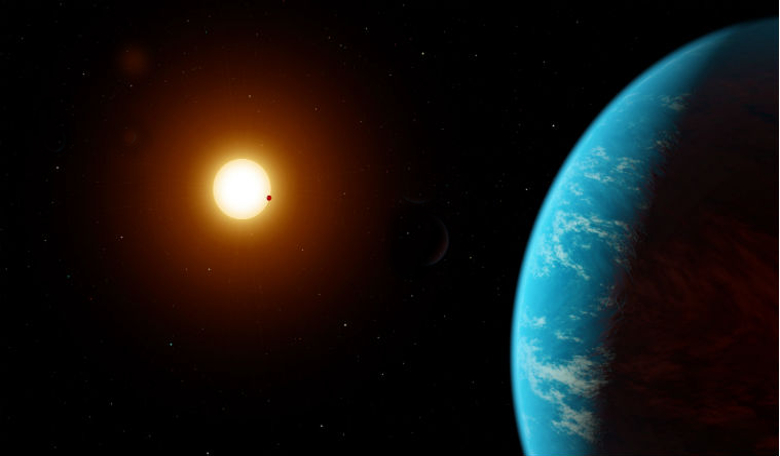The holy grail of planet-hunting will undoubtedly be the discovery of an Earth-like world, complete with an appropriate and substantial atmosphere, located within the habitable zone of its host star and key to uncovering worlds such as these is the recently-launched Transiting Exoplanet Survey Satellite (TESS).
But finding a rocky planet orbiting at a reasonable distance from its host star will be difficult to achieve with TESS, as the state-of-the-art planet-hunter is most sensitive to finding exoplanets that orbit their host stars in less than 13 days.
However, that’s not to say that it won’t find any planets at longer orbital periods and indeed, new research from an international team of astronomers have found just that. Known as HD 21749b, TESS has found an exoplanet that takes 36 days to traverse its host star; this is the longest-period TESS planet confirmed to date.
HD 21749b is sub-Neptunian in size and it has been discovered whizzing around a bright, nearby K dwarf (HD21749 ) located just 16 parsecs away. K dwarfs are main sequence stars that are intermediate in size between red M-type main sequence stars ("red dwarfs") and yellow G-type main-sequence stars (“yellow dwarfs”). As such K dwarfs often get called orange dwarfs.
What is even more intriguing about the find is that HD 21749b is dense, really dense. This heavy world is one of only three exoplanets to have been found that are this dense. Weighing in at nearly six grams per cubic centimetre (Earth for comparison has an average density of 5.5 g/cm3), this condensed quality indicates that HD 21749b could be surrounded by a substantial atmosphere.
But there’s more. The discovery by the team also heralded another serendipitous find – another planetary candidate orbiting around HD 21749 with a 7.8-day period. If confirmed, this could become the first Earth-sized planet discovered by TESS and therefore the smallest (TESS) planet found to date.
This smaller world has been given the moniker TOI 186.02, where TOI stands for Tess Object of Interest, and it has a radius similar to that of our own planet (0.9 Earth radii).
Confirmation that this smaller companion is indeed a real discovery and not something else masquerading as a planet is still needed. Nonetheless, the HD 21749 system is certainly looking a desirable place in which to study “planetary composition and architecture in multi-planet systems”, say the team, whose lead author on the research paper is Diana Dragomir from the Department of Physics and Kavli Institute for Astrophysics and Space Research, Massachusetts.
Just a short time into its two year mission to deliver 50 planets with a radii of less than four Earth radii, TESS it seems is already off to a good start. And, although longer-period transiting planets are notoriously difficult to find, systems such as HD 21749 could be just the tip of the iceberg.
This research, which has yet to be peer-reviewed by fellow scientists, can be found here.











